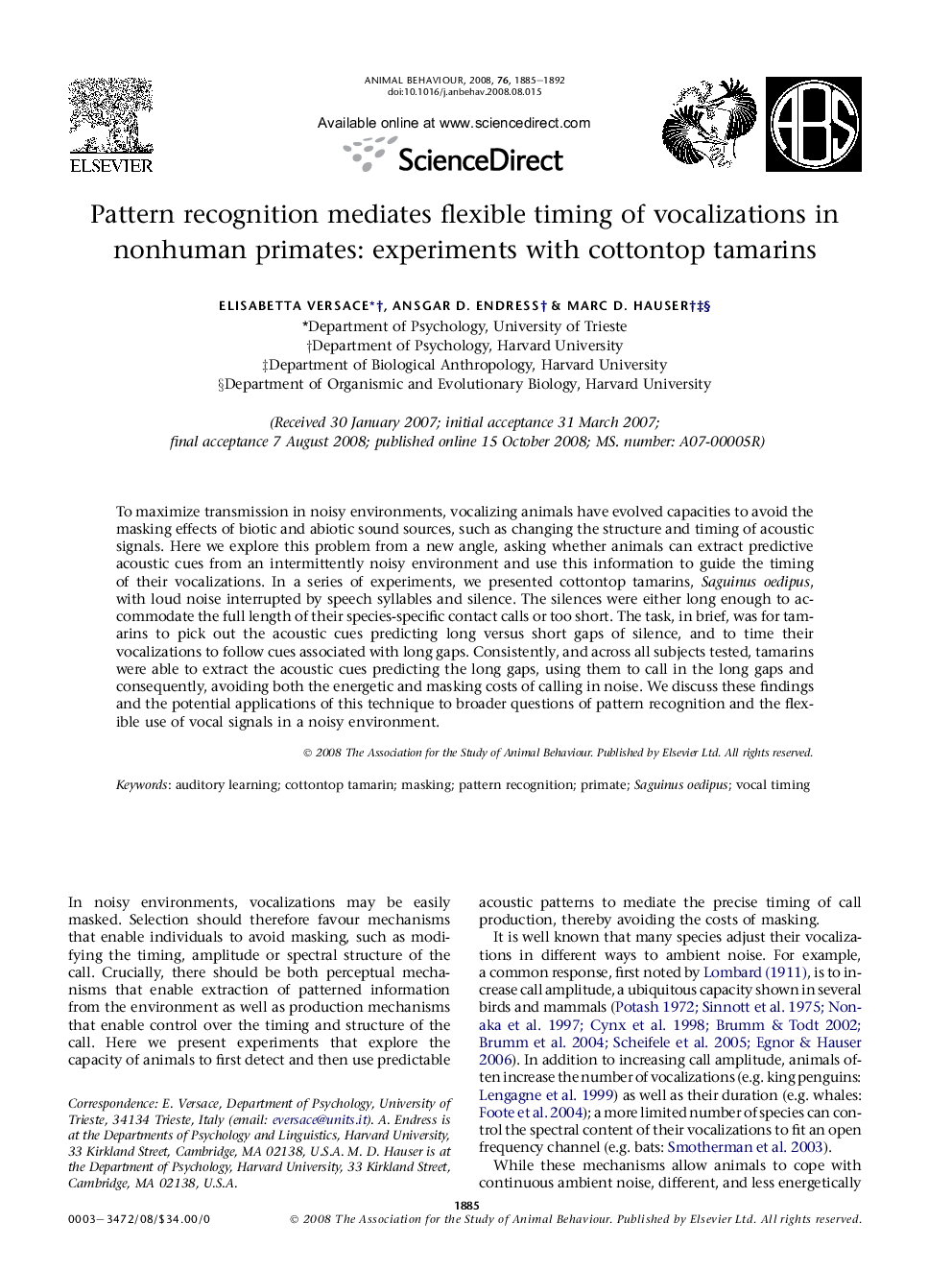| Article ID | Journal | Published Year | Pages | File Type |
|---|---|---|---|---|
| 2418492 | Animal Behaviour | 2008 | 8 Pages |
To maximize transmission in noisy environments, vocalizing animals have evolved capacities to avoid the masking effects of biotic and abiotic sound sources, such as changing the structure and timing of acoustic signals. Here we explore this problem from a new angle, asking whether animals can extract predictive acoustic cues from an intermittently noisy environment and use this information to guide the timing of their vocalizations. In a series of experiments, we presented cottontop tamarins, Saguinus oedipus, with loud noise interrupted by speech syllables and silence. The silences were either long enough to accommodate the full length of their species-specific contact calls or too short. The task, in brief, was for tamarins to pick out the acoustic cues predicting long versus short gaps of silence, and to time their vocalizations to follow cues associated with long gaps. Consistently, and across all subjects tested, tamarins were able to extract the acoustic cues predicting the long gaps, using them to call in the long gaps and consequently, avoiding both the energetic and masking costs of calling in noise. We discuss these findings and the potential applications of this technique to broader questions of pattern recognition and the flexible use of vocal signals in a noisy environment.
